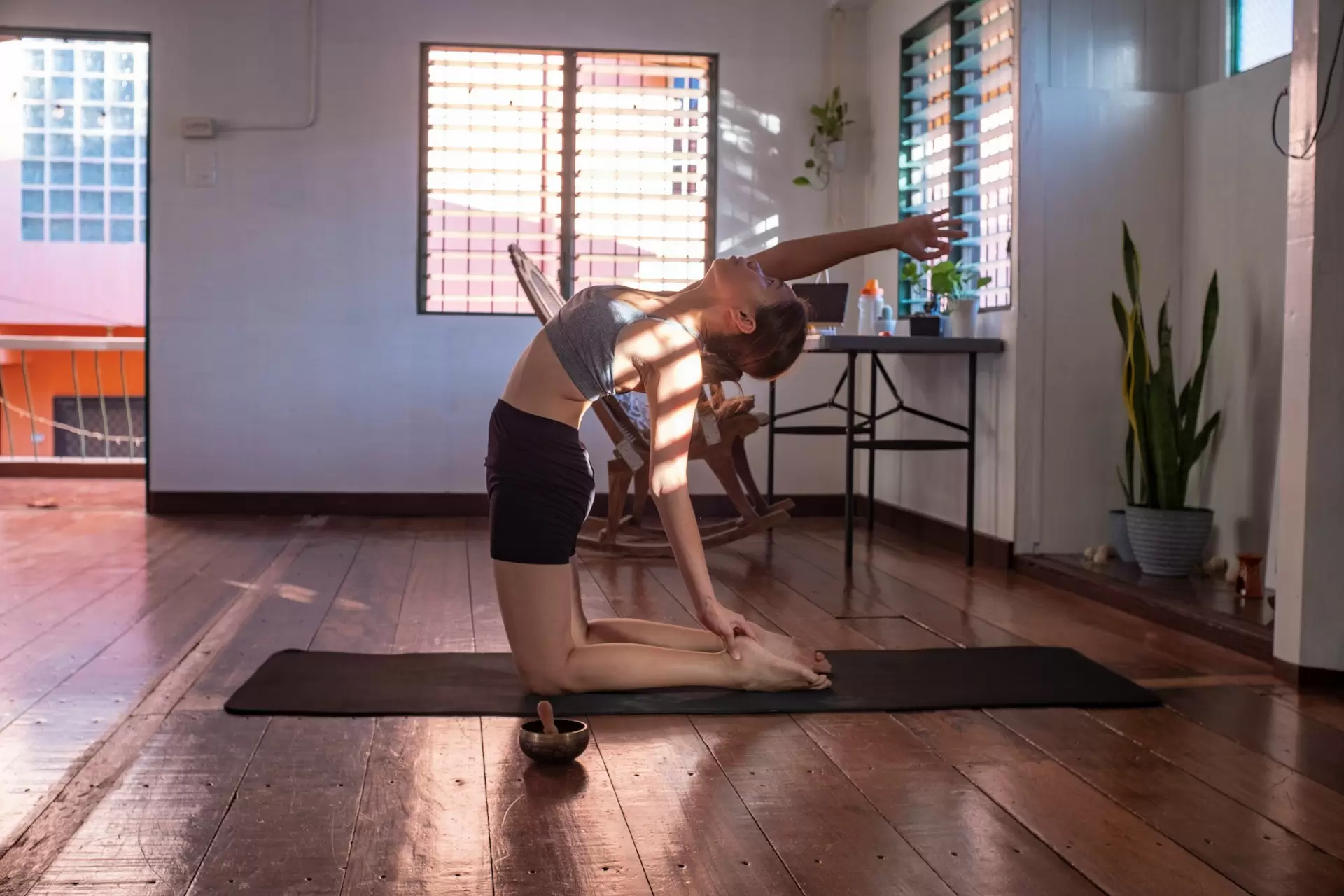There are many techniques to manage stress, relax and help with stage fright before a public appearance. Below I will review the most interesting ones: Jacobs neuromuscular training, Schultz autogenic training, Wim Hof method, TRE (Tension and Trauma Releasing Excercises).
TRE® (Tension & Trauma Releasing Exercises)
The author of the TRE® technique is the psychotherapist Dr. David Barcelli. With the help of appropriate exercises, we can release tension in the body, restore balance in the anatomical, biochemical and neurological systems, and reduce stress. Thanks to this, we can also throw out the emotions accumulated in the body. This is done by shaking and making the muscles vibrate. The whole methodology is suitable for people of all ages with different physical conditions.
TRE® is a self-help tool that we can basically use throughout our lives. Due to its universality, it can help people around the world, regardless of culture or language, because it is based on universal physiological responses.
]Examples of exercises:
According to the author, some of the benefits of practicing this method include:
• Decrease in anxiety and worrying
• Better sleep quality
• Reduction of back and muscle pain
• Improved relationships and fewer conflicts in a relationship
• Reduction of PTSD symptoms (post-traumatic stress disorder, e.g. after a car accident, traumatic survival)
• Increase in our emotional resilience
• Reduction of anxiety associated with chronic or serious illness
• Reducing stress levels for example at work
• Increased endurance and energy
A short animation that illustrates TRE®
Alexandrov’s Technique
This is good for e.g. vocalists who experience tension in the voice because of stage fright, actors and dancers for greater freedom of movement, and even for back pain. Alexander’s technique is a method that works to change habits (movements) in our daily activities. It is a simple and practical method to improve ease and freedom of movement, balance and coordination. This technique teaches you how to use the right amount of effort for a given activity, giving you more energy for all your activities. This is not a series of treatments or exercises, but rather a re-education of the mind and body. Alexander’s technique is a method that helps a person discover a new balance in the body, releasing unnecessary tension. It can be used for sitting, lying, standing, walking, lifting and other daily activities.
TEDx on the Alexander method. A bit about history, it’s worth watching if you speak professionally:
Schultz Autogenic Training
Autogenic training is used in the case of phoniatric problems (voice), neurotic conditions, stress reduction or wherever deep relaxation can be useful. It is based on self-suggestion and during this meditation we relax the nervous system and therefore our body. On average, the training lasts about half an hour. It is a popular treatment method and has nothing to do with Eastern philosophy and religion.
It consists of 6 elements:
• feeling heavy
• feeling warm
• heart rate regulation
• regulation of free breathing
• feeling warm in the solar plexus
• feeling cold on your forehead
Wim Hof Method
Who is Wim Hof? A 60-year-old Dutchman who makes the impossible possible. After his wife’s suicide, he had to take care of his four children and also bounce back from that tragedy. In this crisis he used unconventional methods. Interestingly, Wim broke Guinness records 26 times, including climbing Kilimanjaro only in sandals and shorts, withstood almost 2 hours of bathing in ice, ran a half-marathon barefoot on ice.
The method is based on three pillars – cold exposure e.g. icy showers or sea bathing, breathing techniques and meditation. This is a kind of practice of strengthening the body and mind.
As benefits it lists:
• Strengthening the immune system
• Stress reduction
• Improving sleep quality
• Better concentration
• Greater willpower
• Support during depression and anxiety
Speech by the author himself at TEDxAmsterdam
Jacobson’s Neuromuscular Training
So called progressive muscle relaxation developed by psychiatrist Edmund Jacobson. In his words: “anxious mind cannot exist in a relaxed body” lies the essence of this method. Reducing muscle tone reduces stress. Clinical studies have repeatedly confirmed the effectiveness of Jacobson’s neuromuscular training. In the long run, practicing can improve sleep quality and reduce anxiety and stress.
To put it simply, training consists of contracting and relaxing muscles. It’s best to do it in a lying or sitting position with a comfortable back support for several minutes. You can do it during some downtime, when we you can turn off for a moment (including your phone :)).
To start, it’s worth starting with instructions on Youtube, and as you gain confidence, start practicing on your own. Lie down comfortably on a mat on your back with straight arms and legs.
• Take a deep breath and contract the first muscle group (strongly, but not so much that it leads to pain or spasm) from 4 to 10 seconds.
• Exhale and immediately relax the first muscle group suddenly and completely (do not relax gradually).
• Now relax for 10 to 20 seconds before working on the next muscle group. Try to feel the difference in your body between the tense and relaxed muscles.
• Repeat this pattern for different muscle groups, e.g. hands, feet, arms, chest, abdomen and back.
• When you’re done with all muscle groups, count to 10 and try to come back to being here and now (mindfulness)
Which method helps you the most? I encourage you to try them?




